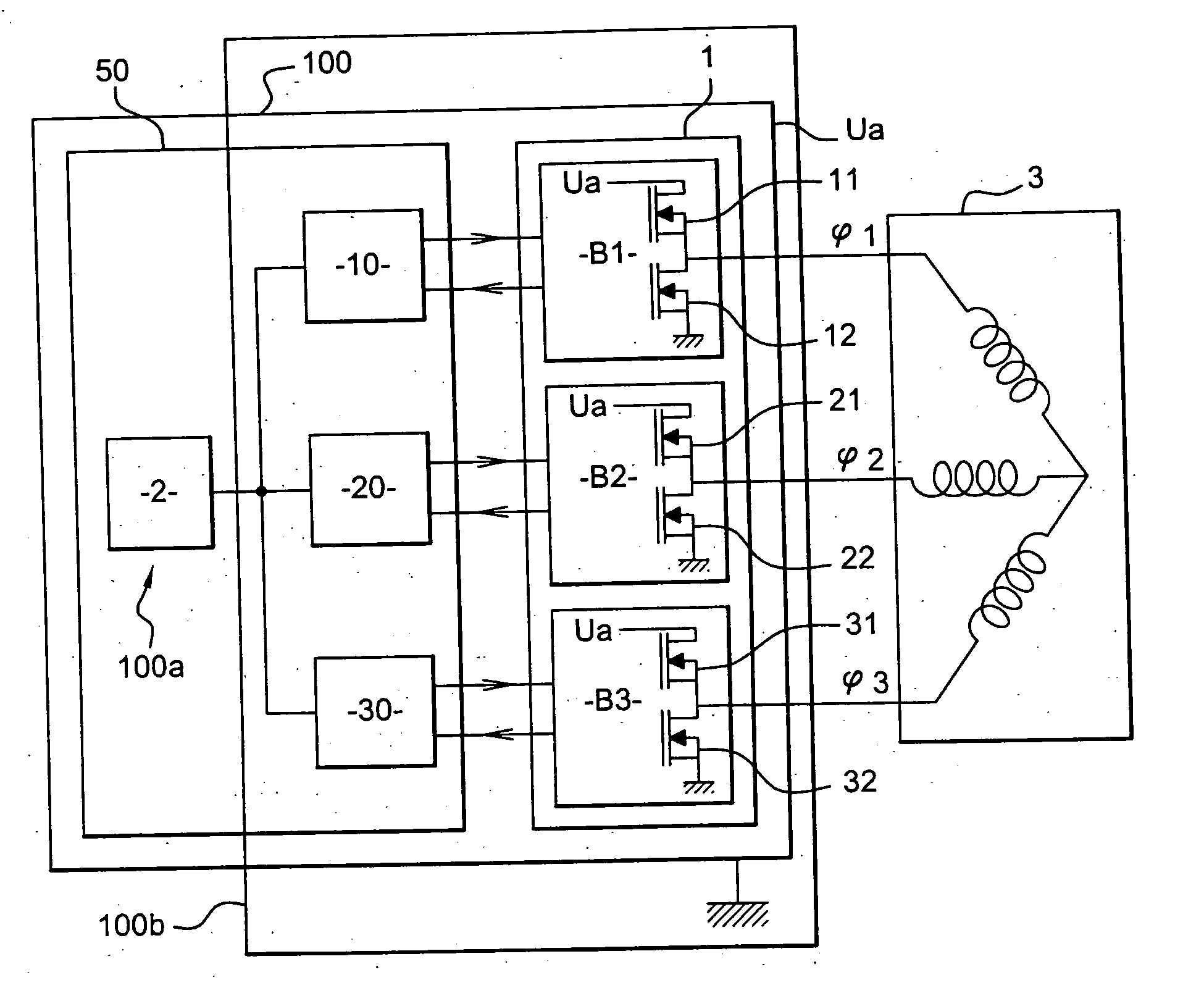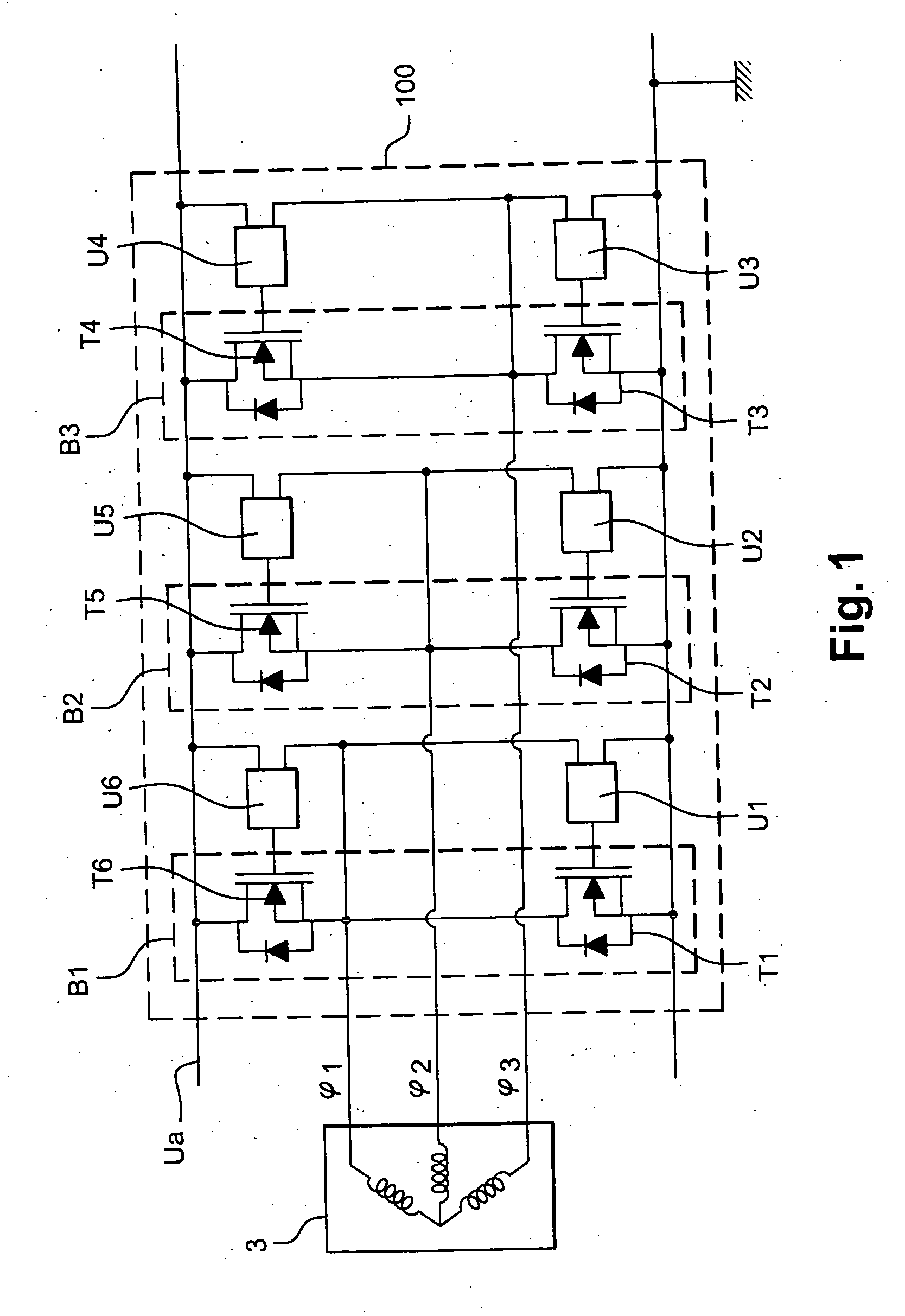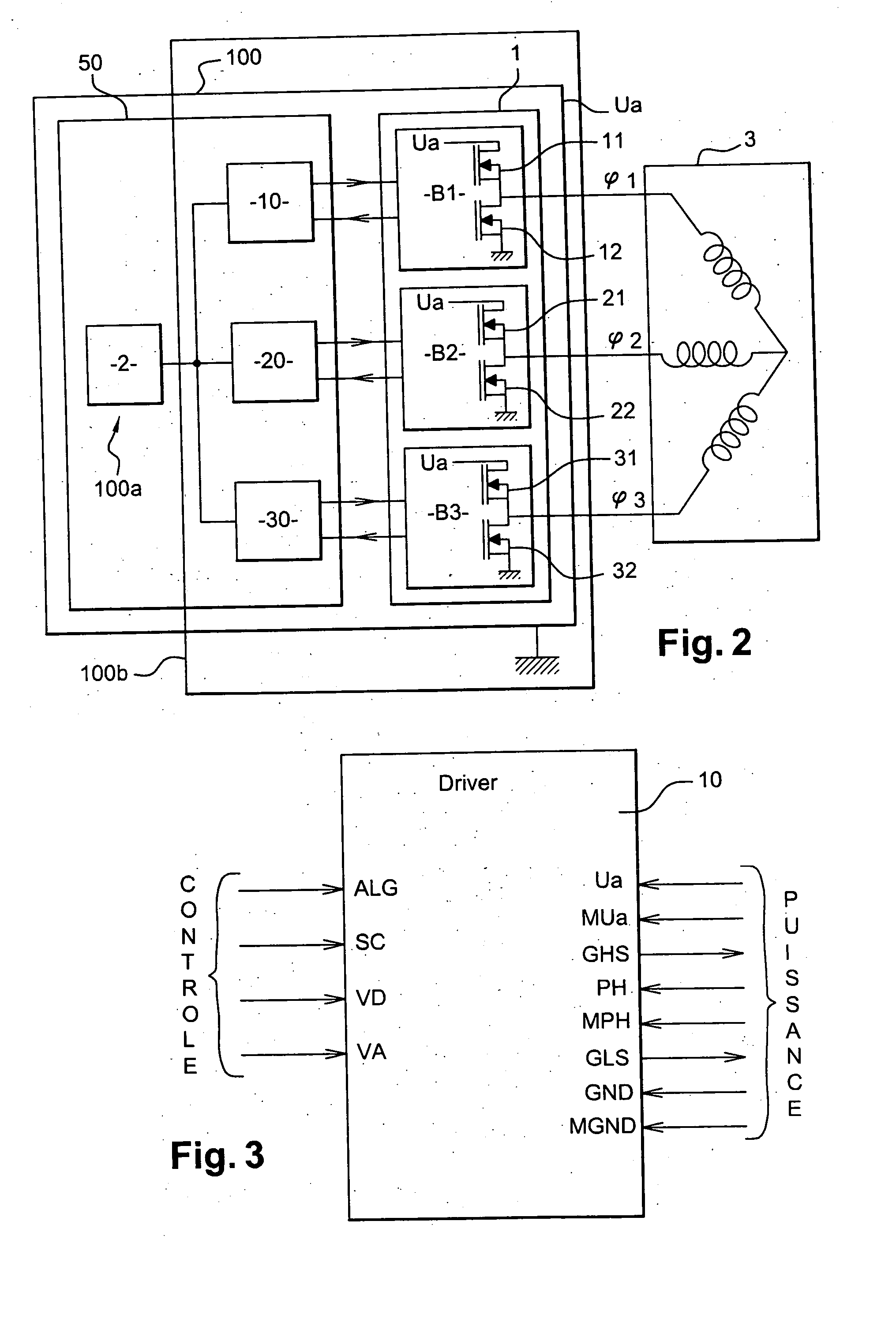Control and power module for integreated alternator-starter
- Summary
- Abstract
- Description
- Claims
- Application Information
AI Technical Summary
Benefits of technology
Problems solved by technology
Method used
Image
Examples
first embodiment
[0157] In a first embodiment, as can be seen in FIGS. 9 and 10, bosses 123 are formed on the base. These bosses are adapted to receive the connecting wires 126 in constructing the power circuit. These connections are preferably of the wire bonding type. During the process of moulding the resin at the level of the metallic tracks, it will clearly be necessary to provide openings 124, free of resin, to enable the pads of the boss 123 to pass upwards. Similarly, the insulator 108, such as TVI mentioned above, will preferably have to be pressed out beforehand in order that it is able to be positioned around the pads 123. Such a configuration has the advantage that its connecting wires are very short.
[0158] In another version and as shown in FIG. 11, an aperture in the resin 107 and in the insulator 108 is formed in such a way as to reach the metallic base 109, constituting ground, directly. This solution enables the bosses 123 to be eliminated.
[0159]FIG. 12 illustrates one embodiment o...
second embodiment
[0174] In the case where the dissipater is electrically insulated from the rear bearing plate of the machine, the dissipater constitutes an insulated ground which is connected to the ground of the battery directly or through the chassis of the vehicle. In this configuration, and in the second embodiment which consists in including the electronics in a single power module, as can be seen in FIG. 12, the ground pads 202a and 203a are omitted and are replaced by ground connections which are similar to those described with reference to FIGS. 9 to 11, and in which the base 109 will be replaced by the top face of the dissipater 113.
[0175]FIG. 13 shows a side view, in cross section, of the rear of an alternator-starter in which the electronics are integrated, having an arrangement of control and rectifying electronics according to the invention. As in all known alternator-starter machines, the machine shown in FIG. 13 has a rotor 743 fixed on a rotating shaft 502. The rotor 743 is surround...
first modified embodiment
[0227] In a first modified embodiment, the dissipater bridge 113 is fixed on the rear bearing plate 504 by means of assembly studs 527 which are electrically insulated and which are preferably non-conductors of heat, thereby constituting a thermal barrier against heat coming from the stator.
[0228] Preferably, the studs 527 are the same as those used for conventionally fixing the bearing plate 504 with the magnetic circuit 508 of the stator 503. An electrically insulating washer 527b is interposed between the fastening nut 527a and the top face 113a of the dissipater 113. A spacer 527c, having a shoulder 527d, is interposed between the lower face 113b of the dissipater and the axially outer face of the rear bearing plate 504.
[0229] In another modified version, the dissipater 113 is fixed with respect to the rear bearing plate 504 in an electrically insulated manner, by means of a screw 528, the head of which is oriented on the side of the lower axial face of the bearing plate 504. I...
PUM
 Login to View More
Login to View More Abstract
Description
Claims
Application Information
 Login to View More
Login to View More - R&D
- Intellectual Property
- Life Sciences
- Materials
- Tech Scout
- Unparalleled Data Quality
- Higher Quality Content
- 60% Fewer Hallucinations
Browse by: Latest US Patents, China's latest patents, Technical Efficacy Thesaurus, Application Domain, Technology Topic, Popular Technical Reports.
© 2025 PatSnap. All rights reserved.Legal|Privacy policy|Modern Slavery Act Transparency Statement|Sitemap|About US| Contact US: help@patsnap.com



